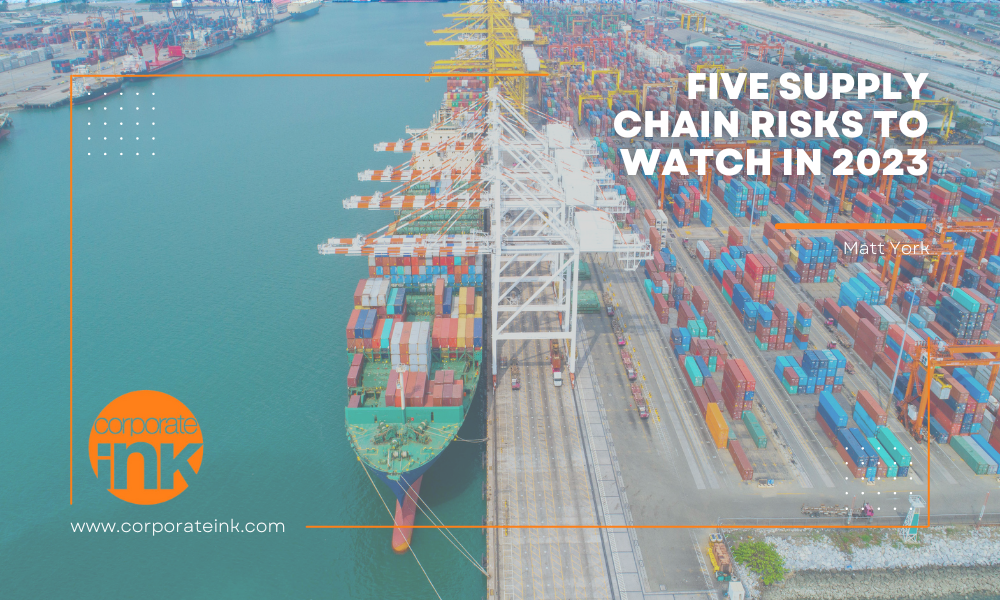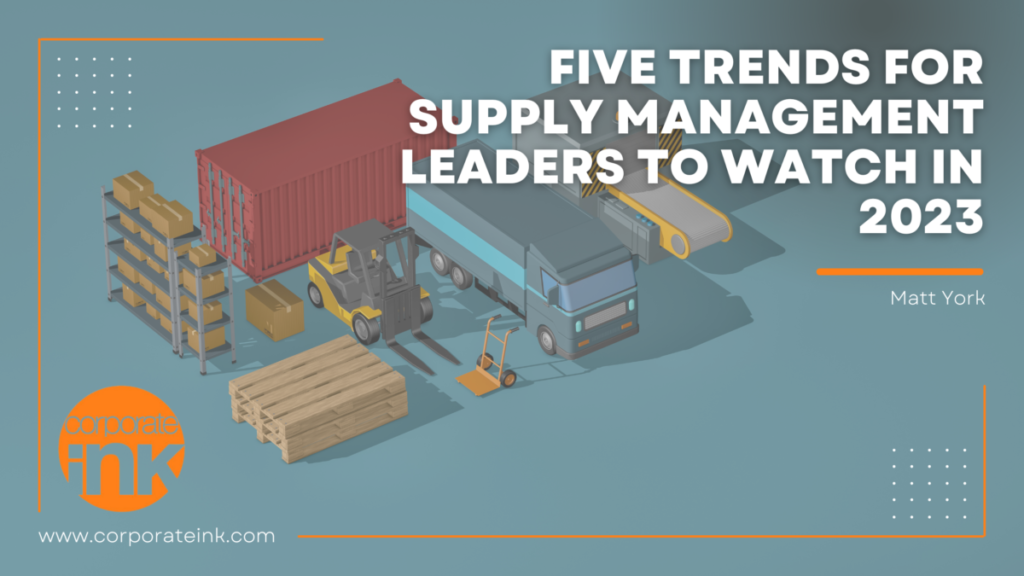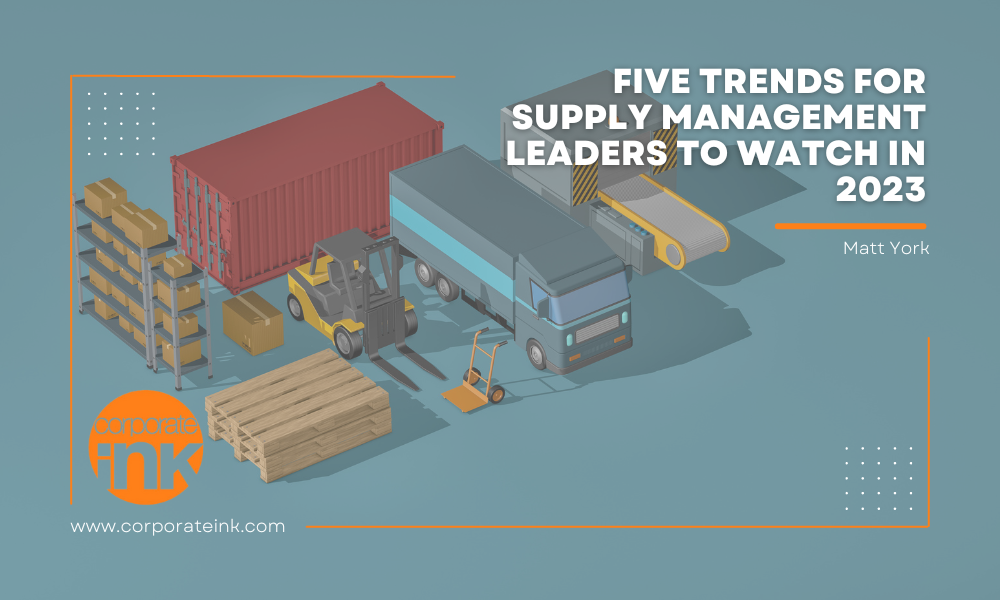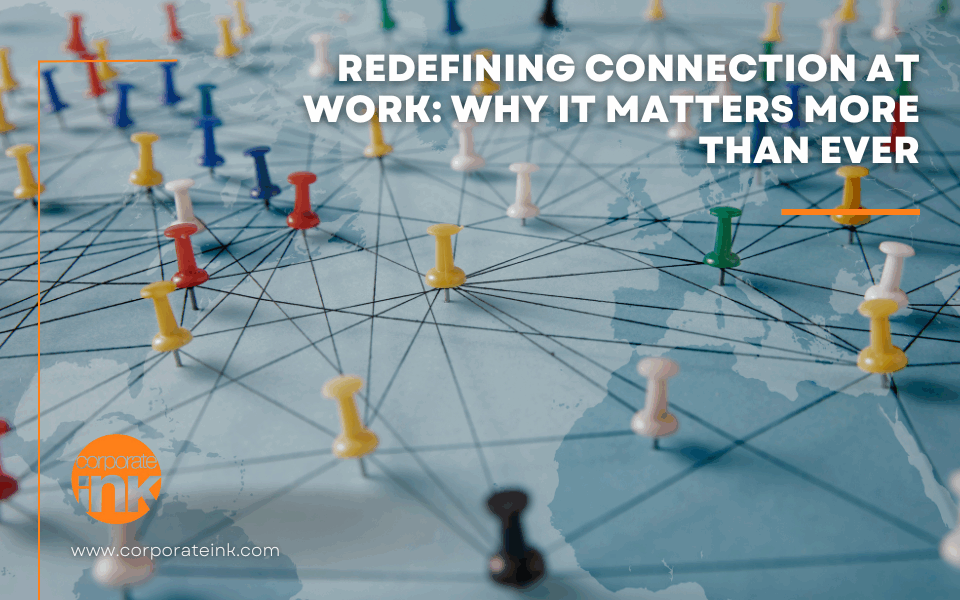
Five Supply Chain Risks to Watch in 2023
February 1, 2023
Women’s History Month Recap: Five Women that Inspire Our Team
March 31, 2023
A former boss used to say that there’s never been a more interesting time to work in supply chain management than right now. He would say that every year because inevitably there are new challenges and opportunities to drive business value, including positive environmental and social change.
It’s also a stressful time for supply chains: Labor and supply shortages, order fulfillment delays, inflation, climate change, DE&I opportunities, modern slavery, new ESG laws and regulations, a looming recession, a war in Europe. You get it…
With so many issues to monitor, it’s easy to get overwhelmed. So, here are five trends and conditions our supply chain PR team is watching this year, based on our work with many of the leading technology innovators in the space.
1. Recession Fears, Mixed Economic Signals
In 2022, the US economy flashed just one recessionary indicator (two straight quarters with negative GDP). All other economic measures – job creation, consumer spending, supply and demand – were strong.
Fast forward to February 2023, and things have changed drastically. In the US, economists forecast the chance of a recession between 35% and 100%. Whether or not it occurs, companies are preparing for a potentially brutal 2023 by cutting costs – notably, by slashing headcount. Beyond layoffs, companies are getting aggressive with other cost-saving measures, and will lean on procurement teams to slash costs across the supply base.
2. 2023 is ESG’s Big Year
ESG issues used to be tangential to procurement and supply chain’s value propositions. Now, they are business critical, and we believe that 2023 is ESG’s big year – for big reasons.
- Customers and shareholders care. Failing to align business practices or make changes to procurement strategies will cause customers and shareholders to flee toxic brands for more responsible alternatives.
- Governing bodies care. There are new ESG laws and regulations in 2023 – such as the US Uyghur Forced Labor Prevention Act and the German Supply Chain Due Diligence Act. The cost of non-compliance is high.
- The opportunity is big: Companies can be part of the solution to our hardest, most pressing problems. Our planet, and humanity, hang in the balance. The planet continues to warm, and mankind continues to pollute the seas and lands, just as they continue to exploit men, women and children. It’s in the collective public interest for companies to drive change. And the biggest levers for change – procurement spend and the global supply chain.
3. Reshoring Picks Up Steam with Billion-Dollar Investments
2022 was a big year for reshoring. Government and industry leaders committed to bring manufacturing operations and jobs back to the US to create more resilient supply chains, protect national security, and strengthen the US economy.
A recent Deloitte survey of manufacturers found that 62% have begun to reshore or nearshore their production capabilities. They estimate that in 2022, US companies re-shored nearly 350,000 jobs – up 25% from 2021. These shifts could cut 20% of Asia-originating shipments by 2025 and 40% of shipments by 2030, according to Deloitte analysts, as the US continues to “decouple” from China to reduce supply chain and national security risks.
A prime example: reshoring semiconductor manufacturing to the US. In 2022, President Biden signed into law the CHIPS and Science Act, which earmarks more than $50 billion for domestic chip research, development, and manufacturing in the US. Apple pledged to open a semiconductor manufacturing plant in Phoenix that will open in 2024, and joins more than half a dozen chip manufacturers re-shoring production to the US.
4. Disruptions, Supply Constraints Will Persist in 2023
Geopolitical crises and instability, adverse market conditions, and other top supply chain risks will continue to disrupt supply chains across industries and lead to shortages in 2023.
The war in Ukraine, already a humanitarian disaster and one of the most disruptive geopolitical events in decades, will get worse before it gets better. As “Europe’s breadbasket,” Ukraine’s grain exports fell last year and are likely to fall again this year, which will contribute to rising global demand and price and further deepen global food insecurity, particularly within the developing world.
Not all disruption disrupts uniformly. For example, while sanctions on Russia’s energy exports haven’t changed the Kremlin’s cost-benefit analysis of the war, they’ve contributed to rising global energy costs, which in turn have contributed to inflation across economies, industries, and markets. But sanctions are also forcing the EU, UK, and US to accelerate their transition to renewable energy sources to become energy independent.
While Russia’s war on Ukraine has been the bear in the basement, hangover effects from the pandemic are contributing to disruptions in 2023. Months after China lifted lockdowns in its factory cities, some consumer-packaged goods, electronics, and medicine, such as Adderall and Amoxicillin, remain in short supply.
5. Digital Transformation Marches on
By the end of 2022, procurement’s digital transformation story was a tale of two cities.
- It was the best of times, with solutions providers bringing groundbreaking, industry-leading technology innovations to market.
- It was the worst of times, with beleaguered, stressed-out procurement teams that had neither enough budget to invest in digital, automated solutions, nor enough time to learn them because they’re grinding it out all day in email and spreadsheets.
Year after year, we see procurement and supply chain tech providers innovate and bring ever more robust, user-friendly, and intelligent solutions to the market. And yet, year after year, we see adoption levels for automated source-to-pay and supply chain visibility and risk solutions stagnate and hover around where they were the previous year.
After years of promising punditry, autonomous sourcing and procurement solutions are operationalizing AI for procurement. They’re removing much of the manual, repeatable, and scalable work that takes up so much of procurement’s time and effort. They’re relegating 80% of this work to machines and enabling end users to focus on the 20% of the work that is most important – like vetting and building relationships with suppliers, and thinking through complex problems.
We’ll surely see even more innovative and intelligent supply management solutions go to market in 2023. Unfortunately, we’re also likely to see similar technology adoption levels in 2023, along with many procurement and sourcing teams continuing to grind it out in Excel and Outlook.
Are you a supply chain or procurement tech provider looking to scale your business and stand our in a crowded and highly-competitive market? Check out our supply chain tech report.





